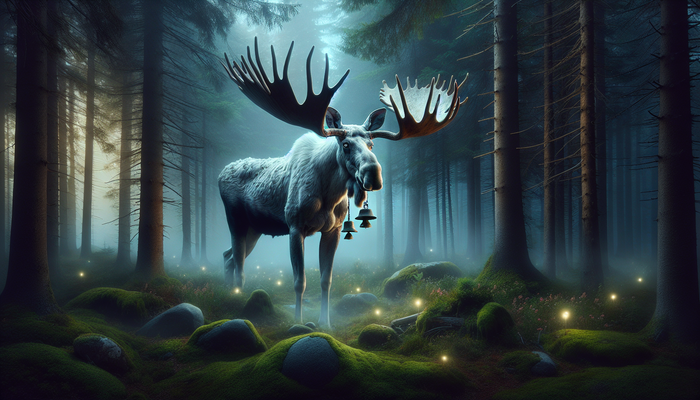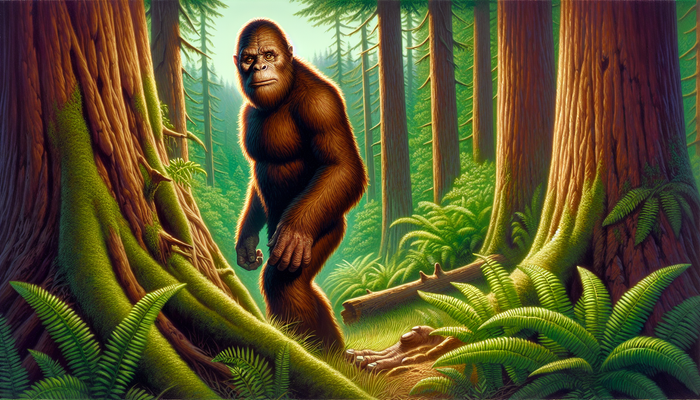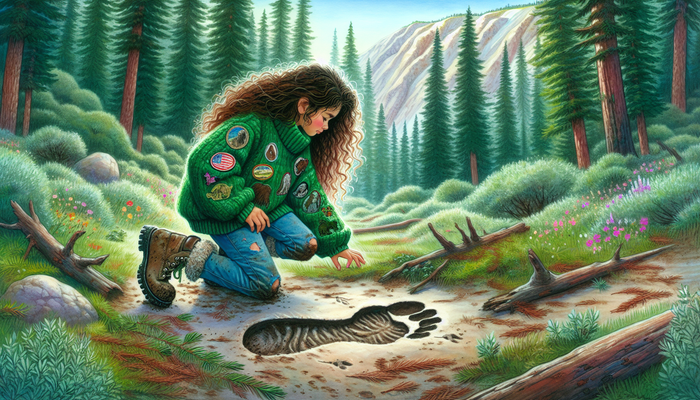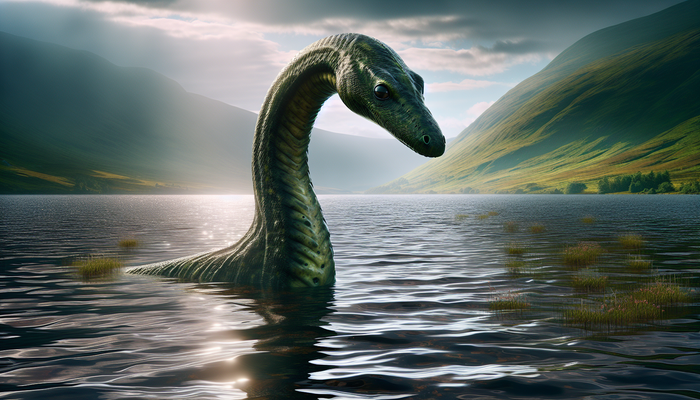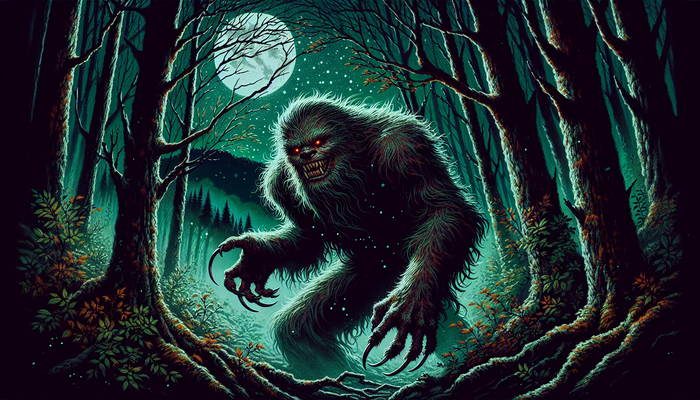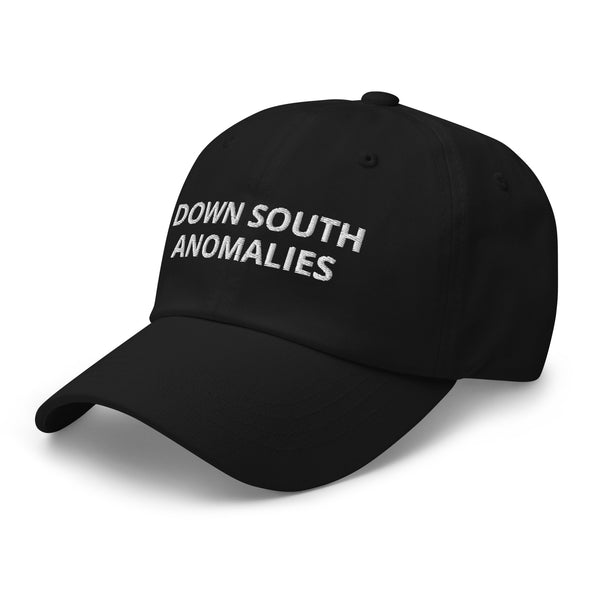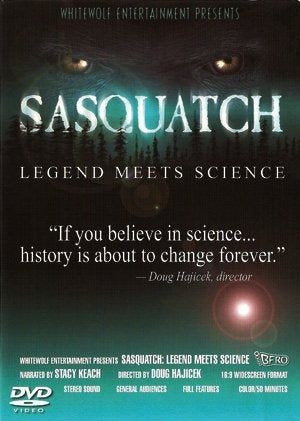The Shadowy World of New York's Legendary Cryptids
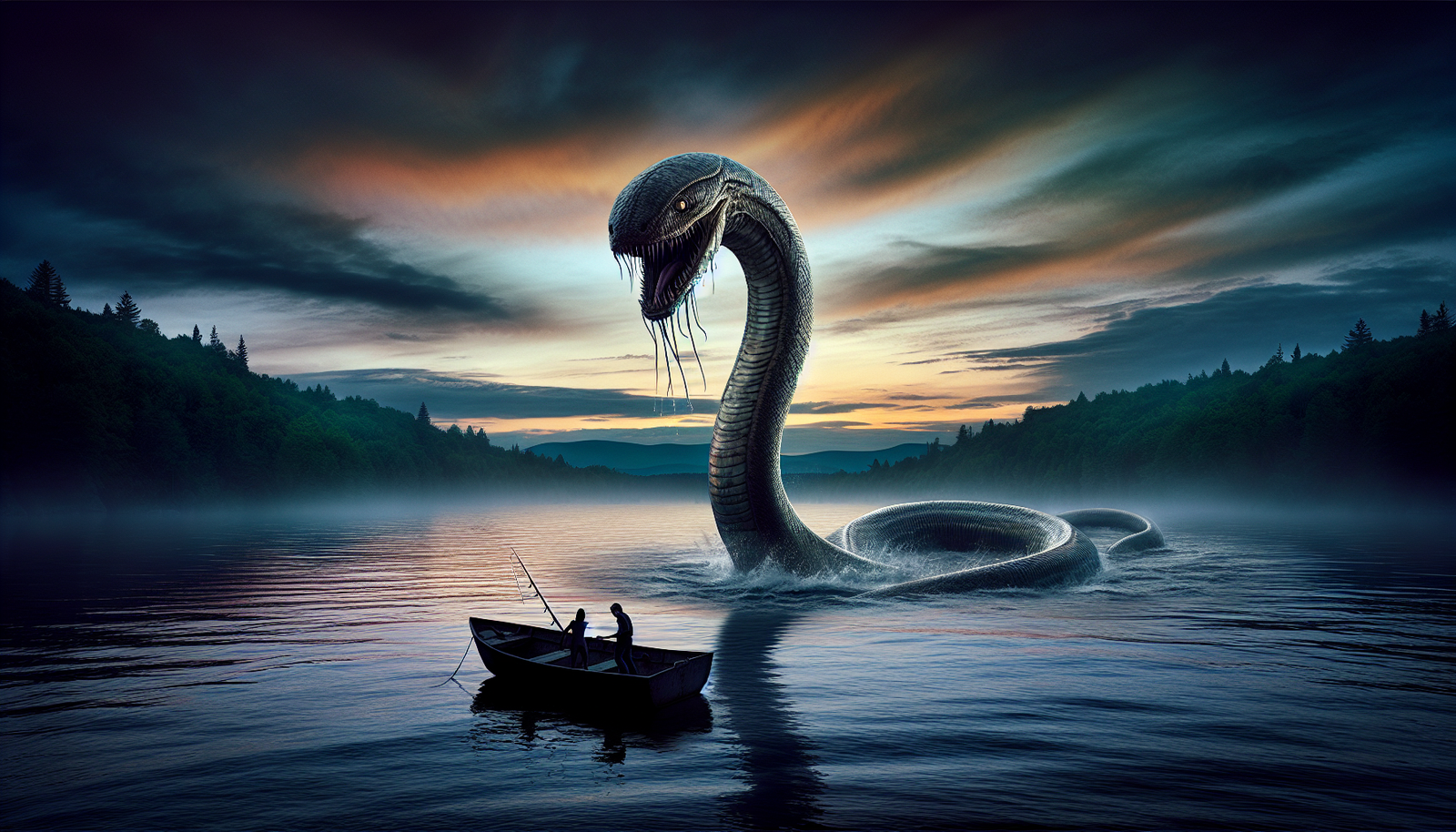
By Jack Sullivan, Bigfoot Researcher
In the realm of cryptozoology, few places boast a richer tapestry of mysterious creatures than New York State. From the murky depths of its lakes to the dense forests blanketing its rugged terrain, the Empire State teems with tales of elusive beasts that have captured imaginations for generations. These legendary cryptids have left an indelible mark on the region's history, folklore, and identity, weaving themselves into the very fabric of local communities.
As a lifelong researcher of the unexplained, I've always been drawn to the shadowy world of New York's mythical monsters. Growing up, I was captivated by stories of Champ, the serpentine leviathan of Lake Champlain, and Bigfoot's alleged stomping grounds in the Adirondacks and Catskills. But the more I delved into these legends, the more I realized that Champ and Sasquatch were just the tip of the iceberg. New York's cryptozoological canon is a veritable menagerie of bizarre creatures, from alien visitors to phantom felines to floating blobs of terror.
In this article, I invite you to join me on a fascinating journey into the heart of New York's cryptid country. We'll explore the origins and evolution of the region's most enduring legends, from their roots in Native American lore to modern-day sightings and controversies. We'll examine the evidence - or lack thereof - and ponder what these creatures might be, whether flesh-and-blood animals or products of misidentification, hoax, or myth. And we'll consider the cultural impact of these beasts and what their enduring allure says about our relationship with the mysterious and the unknown.
So grab your hiking boots and your camera. Adventure awaits in the uncharted wilderness of the Empire State, where the line between legend and reality blurs and the possibility of something strange and wonderful lurking in the shadows is always just around the corner. Let's unravel the mysteries of New York's legendary cryptids together.
Champ: The Lake Champlain Monster
Of all New York's mythical beasts, none is more iconic than Champ, the undisputed king of cryptid lake monsters. For centuries, eyewitness reports have surfaced of a massive creature inhabiting the depths of Lake Champlain, the 125-mile long body of water straddling the borders of New York, Vermont and Quebec. With over 300 sightings on record, Champ is one of the world's most famous and oft-reported aquatic cryptids, second only perhaps to Scotland's legendary Loch Ness Monster in notoriety.
The origins of the Champ legend are deeply rooted in the region's indigenous cultures. The Abenaki and Iroquois tribes who inhabited the Champlain Valley long before European settlement spoke of a giant, horned serpent called Tatoskok who lurked in the lake. When the famed French explorer Samuel de Champlain visited the area in 1609, he recounted sighting a large, thick creature about 20 feet long with a horse-like head bristling with sharp teeth. Champlain's account is often cited as the first documented Champ sighting, though some scholars argue he was likely describing a garfish or sturgeon.
Over the centuries, hundreds of witnesses have come forward with Champ encounters, describing a serpentine, multi-humped beast ranging anywhere from 10 to 200 feet in length. Most agree on a few key details:
- A long, sinuous neck
- A head resembling a horse, seal or snake
- Dark, rubbery skin
Some even claim to have heard the creature let out a distinctive tuba-like bellow from beneath the waves.
The most compelling piece of evidence in the Champ saga emerged in 1977, when Sandra Mansi snapped a now-infamous photograph depicting what appeared to be a plesiosaur-like animal with a slender neck protruding from the lake. The Mansi photo ignited a firestorm of debate in cryptozoological circles, with believers touting it as the best proof to date of Champ's existence and skeptics dismissing it as a hoax or misidentification. To this day, the grainy image remains a polarizing and hotly contested artifact.
So what exactly is Champ? Theories abound, ranging from the plausible to the fantastical:
- A surviving relic population of plesiosaurs, marine reptiles thought to have gone extinct with the dinosaurs 66 million years ago
- An oversized species of eel, sturgeon, or gar - all of which are native to the lake
- Giant salamanders
- Freshwater seals
- Prehistoric whales
Regardless of the truth behind the legend, Champ has undoubtedly left an indelible mark on the culture and identity of the Champlain Valley. The creature has been afforded legal protection in both New York and Vermont, with the latter declaring it an official state symbol in 1982. Port Henry, NY has erected a giant Champ statue and holds a "Champ Day" festival each summer. The beast even served as the mascot for Vermont's minor league baseball team, the Vermont Lake Monsters, until 2020.
As a cryptozoologist, I've always been fascinated by the Champ legend and have made numerous research trips to Lake Champlain over the years. While I've yet to spot the elusive creature myself, I have interviewed dozens of eyewitnesses and dug deep into the historical record. I've pored over the Mansi photo with a magnifying glass, searching for signs of photographic trickery. And I've spent long, chilly nights on the shores of the lake, scanning the dark waters with binoculars and underwater camera rigs, hoping for a glimpse of this charismatic cryptid.
Do I believe Champ exists? The jury is still out for me. The sheer volume and consistency of sightings over the centuries is certainly intriguing, as is the tantalizing prospect of an undiscovered species lurking in one of the continent's largest and deepest lakes. But I'm also well aware of the human capacity for misidentification and the power of suggestion in shaping perceptions. For every compelling eyewitness account, there's a mundane explanation that could fit the bill.
Ultimately, I believe the search for Champ is about more than just proving or disproving the existence of a single creature. It's about the spirit of curiosity, the thrill of the hunt, and the enduring allure of the unknown. Whether Champ is ever conclusively documented or remains forever a figure of myth and legend, the creature has an important role to play in the story of the Champlain Valley and the imaginations of those who call this region home. The quest for this cryptozoological icon is, in many ways, a quest to understand ourselves and our place in the natural world.
Aquatic Enigmas: New York's Other Lake Monsters
While Champ may reign supreme in the pantheon of New York's aquatic cryptids, the Empire State's waterways are allegedly home to a veritable menagerie of other mysterious lake monsters. From the Hudson River to the Finger Lakes, reports of strange, serpentine creatures have surfaced for generations, sparking intrigue and debate among locals and cryptozoologists alike.
Kipsy: The Hudson River Monster
One of the most enduring of these aquatic enigmas is Kipsy, the alleged monster of the Hudson River. The legend of Kipsy dates back centuries to the oral traditions of the indigenous tribes who once inhabited the Hudson Valley. The Lenape and Mahican people spoke of a supernatural horned serpent lurking in the river's depths, a powerful creature imbued with spiritual significance.
European settlers began reporting sightings of a large, snake-like animal in the Hudson as early as the 17th century, with accounts persisting well into the modern era. Witnesses describe Kipsy as a massive, serpentine beast, sometimes compared to a giant eel or prehistoric reptile. Some even claim the creature has a horse-like head, drawing comparisons to Champ and other lake monsters.
Kipsy earned its memorable moniker in the early 1900s, a portmanteau of Kips Bay in Manhattan and the famed Loch Ness Monster. The name stuck, and Kipsy sightings continued to make headlines throughout the 20th century:
- In 1934, a group of construction workers claimed to have seen a 30-foot serpent undulating through the water near Bear Mountain Bridge.
- In 1969, a couple driving along the river near Stony Point reported a similar creature breaching the surface.
Despite the persistence of Kipsy reports, hard evidence of the creature's existence remains elusive. Some cryptozoologists have proposed that the beast could be a surviving population of prehistoric reptiles, such as plesiosaurs or mosasaurs, that somehow adapted to the river's freshwater environment. Others suggest Kipsy may be an oversized species of eel, sturgeon, or Atlantic sea serpent that ventured up the Hudson from the ocean.
Skeptics, of course, point to a range of mundane explanations for Kipsy sightings, from misidentified fish and marine mammals to optical illusions caused by waves, logs, or other debris. Some even suggest the legend may have originated with sightings of large, snake-like fishing traps used by indigenous tribes in the region.
Old Greeny: The Cayuga Lake Monster
Another of New York's enduring aquatic cryptids is Old Greeny, the reputed monster of Cayuga Lake. Sightings of a serpentine creature in the lake date back to at least 1897, when the Ithaca Journal reported on a 30-35 foot "sea serpent" spotted by startled witnesses. Some speculated that Old Greeny could be a member of a family of monsters inhabiting the nearby Seneca Lake, perhaps reaching Cayuga through an underground channel.
Over the years, sporadic Old Greeny sightings have continued to trickle in, often describing a large, snake-like creature with humps or coils visible above the surface. As with Kipsy and Champ, theories about Old Greeny's identity range from the prosaic to the fantastic, with some suggesting the beast could be anything from a giant eel to a prehistoric holdover.
As a cryptozoological researcher, I find the persistence and consistency of New York's lake monster legends to be deeply intriguing. While I remain skeptical of some of the more outlandish explanations, I believe these enduring traditions hint at the possibility of genuine zoological mysteries lurking beneath the surface of the Empire State's waterways.
Perhaps these creatures represent undocumented species that have eluded scientific classification, their populations dwindling and elusive. Or maybe they are indeed relics of a prehistoric past, improbable survivors of long-extinct lineages clinging to a fragile existence in isolated pockets. The romantic in me wants to believe that such wonders could still be out there, waiting to be discovered.
But even if Kipsy, Old Greeny, and their ilk are never proven to be flesh-and-blood creatures, I believe they still have an important role to play in the cultural ecosystem of the regions they inhabit. These legends are a vital part of the identity and sense of place that defines communities in the Hudson Valley and Finger Lakes. They connect people to the natural world around them and to the rich history and traditions of those who came before.
In a rapidly changing world, where the wild places are increasingly hemmed in by development and human activity, perhaps we need creatures like Kipsy and Old Greeny more than ever. They remind us that there are still mysteries to be unraveled, blank spaces on the map where the imagination can roam free. And they challenge us to keep exploring, keep questioning, and keep seeking out the wonders that may yet lurk in the shadowy depths of the unknown.
Bigfoot's Empire State Stomping Grounds
When most people think of Bigfoot, they picture the dense forests of the Pacific Northwest or the remote wilderness of the Canadian Rockies. But the Empire State has its own rich history of Sasquatch sightings, with reports of large, hairy, bipedal creatures roaming the backwoods of New York dating back generations.
The epicenter of Bigfoot activity in New York seems to be the vast expanse of forest and mountain covering the Adirondacks and Catskills regions. These remote, rugged landscapes provide the perfect habitat for an elusive, undiscovered primate, with miles of dense woodland, hidden valleys, and isolated waterways to roam.
One of the most famous alleged Bigfoot hotspots in New York is Whitehall, a small town on the eastern edge of the Adirondacks near the Vermont border. In the 1970s, a series of sightings put Whitehall on the cryptozoological map, with multiple witnesses reporting encounters with a large, hairy, humanoid creature in the forests around town.
The most notorious of these incidents occurred in August 1976, when a group of teenagers claimed to have seen a massive, bipedal creature cross the road in front of their car near Abair Road. The beast was described as standing over 7 feet tall, with dark, shaggy hair and glowing red eyes. The sighting sparked a flurry of Bigfoot hysteria in Whitehall, with locals dubbing the creature the "Abair Road Monster" or "Whitehall Bigfoot."
In the decades since, Whitehall has embraced its Bigfoot connection, even going so far as to adopt the creature as its official town animal in 2004. The community hosts an annual Sasquatch Calling Festival each fall, drawing cryptozoology enthusiasts from across the region for a weekend of Bigfoot-themed festivities, including guided expeditions, expert lectures, and even a Bigfoot calling contest.
But Whitehall is far from the only place in New York with a Bigfoot pedigree. Sightings have been reported throughout the Adirondacks and Catskills, as well as in the remote forests of the Southern Tier and Allegheny Plateau. Some researchers have even suggested that the Empire State could be home to a breeding population of Sasquatch, with the dense, untrammeled wilderness providing ample space for the creatures to roam undetected.
From Bigfoot to UFOs: Hangar 1 Publishing Has You Covered!
Explore Untold Stories: Venture into the world of UFOs, cryptids, Bigfoot, and beyond. Every story is a journey into the extraordinary.
Immersive Book Technology: Experience real videos, sights, and sounds within our books. Its not just reading; its an adventure.



